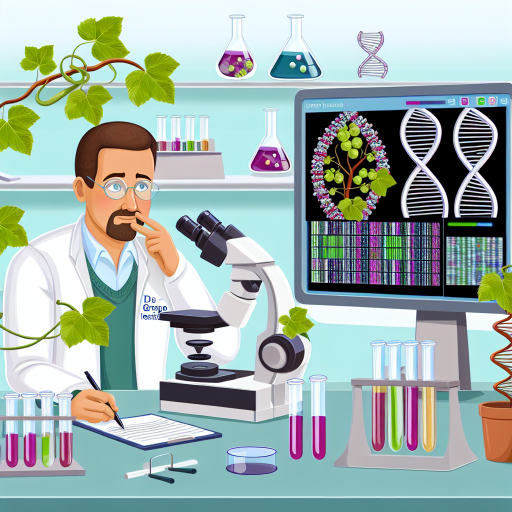Introduction
Agriculture plays a crucial role in today’s society.
It provides food for a growing global population.
However, the industry faces a range of environmental challenges.
These challenges threaten its sustainability.
Water Scarcity
Water scarcity is undeniably one of the top environmental challenges in agriculture today.
With the increasing demand for food production to feed a growing global population, the pressure on water resources has never been higher.
Explanation of How Water Scarcity is a Major Challenge for Agricultural Practices
Water is a crucial element for agriculture as it is essential for plant growth and yield.
However, due to climate change and mismanagement of water resources, many regions are facing water scarcity.
This scarcity can limit the amount of water available for irrigation, leading to reduced crop yields and even crop failures.
Impact of Droughts and Irrigation on Water Availability for Crops
Droughts, which are becoming more frequent and severe due to climate change, can significantly reduce water availability for crops.
In such situations, irrigation becomes crucial to ensure that crops receive an adequate amount of water to survive.
However, inefficient irrigation practices can further deplete water resources and exacerbate water scarcity issues.
Discussion on Sustainable Water Management Techniques in Agriculture
To address the challenge of water scarcity in agriculture, sustainable water management techniques are essential.
These techniques aim to optimize water use efficiency, reduce water wastage, and conserve water resources for future generations.
Some of the sustainable water management practices include:
- Drip Irrigation: This technique delivers water directly to the roots of plants, minimizing water loss through evaporation and runoff.
- Rainwater Harvesting: Collecting rainwater and storing it for agricultural use can help reduce dependence on freshwater sources.
- Conservation Tillage: By reducing soil disturbance, conservation tillage helps improve water retention in the soil, making more water available to plants.
- Crop Rotation: Planting different crops in succession can help improve soil structure and water retention, reducing the need for irrigation.
- Water Recycling: Treating wastewater from agricultural activities and reusing it for irrigation can help reduce the demand for freshwater sources.
Water scarcity poses a significant challenge to agricultural practices.
With the adoption of sustainable water management techniques, farmers can mitigate the impacts of water scarcity.
These techniques ensure the long-term sustainability of agriculture.
It is essential for policymakers, farmers, and other stakeholders to work together to address water scarcity.
They must ensure food security for future generations.
Transform Your Career Today
Unlock a personalized career strategy that drives real results. Get tailored advice and a roadmap designed just for you.
Start NowSoil Degradation
Soil degradation is a serious concern in agriculture today.
It negatively impacts crop yields and overall farm productivity.
Soil degradation refers to the decline in soil quality.
This decline can be caused by various factors such as erosion, salinization, and nutrient depletion.
Description of Soil Degradation
Soil degradation is the deterioration of soil health and fertility.
This deterioration leads to reduced plant growth and crop yields.
It can result from erosion, compaction, loss of organic matter, and contamination with pollutants.
Negative Effects on Crop Yields
Soil degradation has detrimental effects on crop yields.
It reduces the soil’s ability to support plant growth and provide essential nutrients.
This reduction can lead to lower yields, poor crop quality, and increased susceptibility to pests and diseases.
Causes of Soil Erosion, Salinization, and Nutrient Depletion
- Soil Erosion: Caused by water, wind, or human activities that remove the topsoil.
- Salinization: Occurs when the salt content in the soil increases due to irrigation with saline water.
- Nutrient Depletion: Results from continuous farming without proper nutrient management.
Strategies for Soil Conservation and Restoration
To combat soil degradation, farmers can implement various soil conservation and restoration practices.
These strategies aim to improve soil health, fertility, and productivity.
They also focus on reducing erosion and nutrient depletion.
Conservation Tillage
Conservation tillage practices, such as no-till or reduced tillage, help minimize soil disturbance and erosion.
This practice preserves soil structure and organic matter.
It also improves water infiltration and reduces runoff.
Cover Crops
Planting cover crops, such as legumes or grasses, can protect the soil from erosion.
These crops improve organic matter content and increase nutrient availability.
Cover crops also help suppress weeds and enhance soil biodiversity.
Crop Rotation
Rotating crops in a sequence can help replenish soil nutrients and break pest cycles.
Transform Your Career Today
Unlock a personalized career strategy that drives real results. Get tailored advice and a roadmap designed just for you.
Start NowDifferent crops have diverse nutrient requirements.
This diversity reduces the risk of nutrient depletion in the soil.
Agroforestry
Integrating trees and shrubs into agricultural systems can enhance soil fertility.
Agroforestry practices also provide shade and wind protection.
Tree roots help prevent soil erosion and add organic matter to the soil.
Nutrient Management
Implementing proper nutrient management practices helps maintain soil fertility.
Using organic fertilizers, compost, or precision agriculture techniques can balance nutrient levels.
This practice prevents nutrient depletion and promotes healthy crop growth.
Soil Testing and Monitoring
Regular soil testing and monitoring help farmers assess soil health and nutrient levels.
This information enables them to make informed decisions on fertilization and soil management practices.
Water Management
Efficient water management practices, such as drip irrigation, can help conserve soil moisture.
These practices reduce erosion and prevent salinization.
Proper irrigation scheduling ensures that crops receive adequate water without causing waterlogging.
By implementing these soil conservation and restoration strategies, farmers can mitigate soil degradation.
They can also improve soil health and sustainably enhance agricultural productivity for future generations.
Explore Further: Livestock Manager: Salary and Job Outlook
Pesticide Use and Pollution
Analysis of the detrimental effects of pesticides on the environment and human health.
Discussion on the prevalence of pesticide runoff and contamination in water bodies.
Exploration of alternatives to chemical pesticides for pest management in agriculture.
Detrimental Effects of Pesticides
Pesticides are chemicals used in agriculture to control pests and increase crop yield. While they are effective in protecting crops from pests, they also have detrimental effects on the environment and human health.
Transform Your Career Today
Unlock a personalized career strategy that drives real results. Get tailored advice and a roadmap designed just for you.
Start NowOne of the main concerns regarding pesticide use is the impact it has on non-target species. Pesticides can harm beneficial insects like bees, which are crucial for pollination.
They can also harm birds, fish, and other wildlife that come into contact with contaminated water or food sources.
Furthermore, pesticides can have long-lasting effects on the environment. Some pesticides can persist in the soil for years, impacting soil health and the organisms that live in the soil.
Pesticides can also leach into groundwater, contaminating drinking water sources and posing a risk to human health.
Prevalence of Pesticide Runoff and Contamination
Pesticide runoff is a significant issue in agriculture today. When pesticides are applied to crops, they can be washed away by rain or irrigation, ending up in nearby water bodies.
This runoff can lead to contamination of rivers, streams, and lakes, harming aquatic life and affecting water quality.
One common example of pesticide contamination in water bodies is the presence of herbicides like atrazine. Atrazine has been found in high levels in water sources, posing a threat to aquatic ecosystems and human health.
This contamination can have far-reaching consequences for ecosystems and communities that rely on these water sources for drinking and irrigation.
Exploring Alternatives to Chemical Pesticides
Given the environmental and health risks associated with chemical pesticides, there is a growing interest in exploring alternatives for pest management in agriculture.
One alternative to chemical pesticides is integrated pest management (IPM), which focuses on using a combination of biological, cultural, and mechanical methods to control pest populations.
IPM can help reduce the need for chemical pesticides and minimize their impact on the environment.
Another alternative is organic farming, which prohibits the use of synthetic pesticides and relies on natural methods for pest control.
Organic farming practices, such as crop rotation and companion planting, can help maintain a healthy balance in agroecosystems and reduce the reliance on chemical inputs.
By exploring these alternative approaches to pest management, agriculture can reduce its reliance on chemical pesticides and mitigate the environmental and health risks associated with their use.
It is important for farmers, researchers, and policymakers to work together to promote sustainable and environmentally friendly practices in agriculture.
Gain More Insights: Agricultural Economics: Historical Perspectives and Evolution
Deforestation and Land Conversion
Deforestation for agricultural expansion is a major environmental challenge.
This leads to habitat loss and biodiversity decline.
Trees are cut down to make way for farmland.
This destroys the homes of countless plant and animal species.
Transform Your Career Today
Unlock a personalized career strategy that drives real results. Get tailored advice and a roadmap designed just for you.
Start NowThis loss of habitat can have devastating effects on local ecosystems.
It disrupts the delicate balance of biodiversity.
Species may go extinct, and habitats may become fragmented.
This fragmentation makes it difficult for wildlife to survive.
Furthermore, the impact of land conversion on carbon sequestration and climate change cannot be ignored.
Trees are crucial for absorbing carbon dioxide from the atmosphere.
They help to mitigate the effects of climate change.
When forests are cleared for agriculture, this vital carbon sink is lost.
To address these issues, it is essential to promote sustainable land use practices.
Reducing deforestation in agriculture is crucial.
Implementing agroforestry techniques can help maintain biodiversity and carbon sequestration.
In agroforestry, trees are integrated into agricultural systems.
Other strategies include creating protected areas and establishing reforestation programs.
Implementing policies to regulate land use can also be effective.
By prioritizing conservation and sustainable land management, we can protect ecosystems.
These efforts can mitigate climate change and ensure a healthy future for agriculture.
Gain More Insights: Food Science and the Art of Fermentation

Climate Change
Climate change is one of the most significant environmental challenges facing agriculture today.
It is causing a variety of impacts on agricultural productivity and food security around the world.
Impact on Agricultural Productivity
The shifting climate patterns, including changes in temperature and precipitation, are affecting crop growth and yield.
Transform Your Career Today
Unlock a personalized career strategy that drives real results. Get tailored advice and a roadmap designed just for you.
Start NowFor example, prolonged droughts can lead to crop failures, while excessive rainfalls can cause soil erosion and nutrient depletion.
Impact on Food Security
Climate change is also threatening food security by disrupting global food production.
Extreme weather events, such as hurricanes, floods, and wildfires, can destroy crops and livestock, leading to food shortages and price spikes in the market.
Examples of Extreme Weather Events
- Heatwaves: High temperatures can reduce crop yields and livestock productivity.
- Droughts: Prolonged dry spells can lead to water scarcity and crop failures.
- Floods: Excessive rainfall can cause soil erosion and waterlogging, damaging crops.
- Wildfires: Uncontrollable fires can destroy forests, farmlands, and livestock.
Strategies for Adapting to Climate Change
To cope with the impacts of climate change, farmers and agricultural stakeholders can implement various adaptation strategies:
- Utilizing drought-resistant crop varieties that require less water.
- Implementing water-saving irrigation techniques, such as drip irrigation.
- Introducing agroforestry practices to improve soil quality and biodiversity.
- Adopting precision agriculture technologies for better resource management.
Mitigating the Impacts of Climate Change
Aside from adaptation measures, it is crucial to take actions to reduce greenhouse gas emissions and mitigate the drivers of climate change:
- Transitioning to renewable energy sources, such as solar and wind power.
- Implementing sustainable agricultural practices to reduce carbon footprint.
- Promoting reforestation and afforestation to sequester carbon from the atmosphere.
- Supporting policies that incentivize climate-smart agriculture and carbon-neutral farming.
Addressing the challenges of climate change in agriculture requires a combination of adaptation and mitigation strategies.
By implementing sustainable practices and advocating for climate-friendly policies, we can ensure a resilient and secure food system for future generations.
See Related Content: Soil Health: Practices and Policies for Sustainability
Loss of Biodiversity
One of the top environmental challenges in agriculture today is the loss of biodiversity.
Biodiversity plays a critical role in agriculture for ecosystem resilience and sustainability.
Importance of Biodiversity in Agriculture
Biodiversity in agriculture is essential for maintaining healthy ecosystems that support plant and animal life.
It contributes to soil fertility, pest control, and pollination.
Biodiversity also helps in mitigating the impact of climate change by providing resilience to extreme weather events.
It promotes overall ecosystem stability.
Factors Contributing to Loss of Pollinators, Beneficial Insects, and Native Plants
- Use of chemical pesticides and herbicides that harm pollinators and beneficial insects.
- Conversion of natural habitats into agricultural land, leading to loss of native plants.
- Monoculture farming practices that reduce biodiversity and disrupt natural ecosystems.
Methods to Promote Biodiversity Conservation on Farms
There are several agroecological practices that farmers can adopt to promote biodiversity conservation on farms:
- Implementing crop rotations and intercropping to increase plant diversity and soil health.
- Reducing or eliminating pesticide and herbicide use to protect pollinators and beneficial insects.
- Creating hedgerows, buffer strips, and wildlife corridors to provide habitat for native plants and animals.
- Using cover crops and green manure to improve soil fertility and organic matter content.
- Adopting integrated pest management practices to control pests without harming beneficial insects.
By incorporating these methods into their farming practices, farmers can help preserve biodiversity.
They can create more resilient and sustainable agricultural systems.
Environmental Challenges in Agriculture
Agriculture faces several significant environmental challenges today.
To combat these issues, it is crucial for farmers to adopt sustainable practices.
Collaboration between farmers, policymakers, and consumers is essential in creating a more environmentally friendly agricultural sector.
Transform Your Career Today
Unlock a personalized career strategy that drives real results. Get tailored advice and a roadmap designed just for you.
Start NowBy working together and implementing sustainable farming policies, we can safeguard our environment for future generations.
Additional Resources
Agricultural Research Service Develops Long-Term Roadmap for …
Precision Agriculture: Benefits and Challenges for Technology …
[E-Books for Sale]
The Big Book of 500 High-Paying Jobs in America: Unlock Your Earning Potential
$19.99 • 500 High-Paying Jobs • 330 pages
Explore 500 high-paying jobs in America and learn how to boost your career, earn more, and achieve success!
See All 500 High-Paying Jobs of this E-Book
1001 Professions Without a Degree: High-Paying American Jobs You Can Start Now
$19.99 • 1001 Professions Without a Degree • 174 pages
Discover 1001 high-paying jobs without a degree! Unlock career tips, skills, and success strategies for just $19.99!




